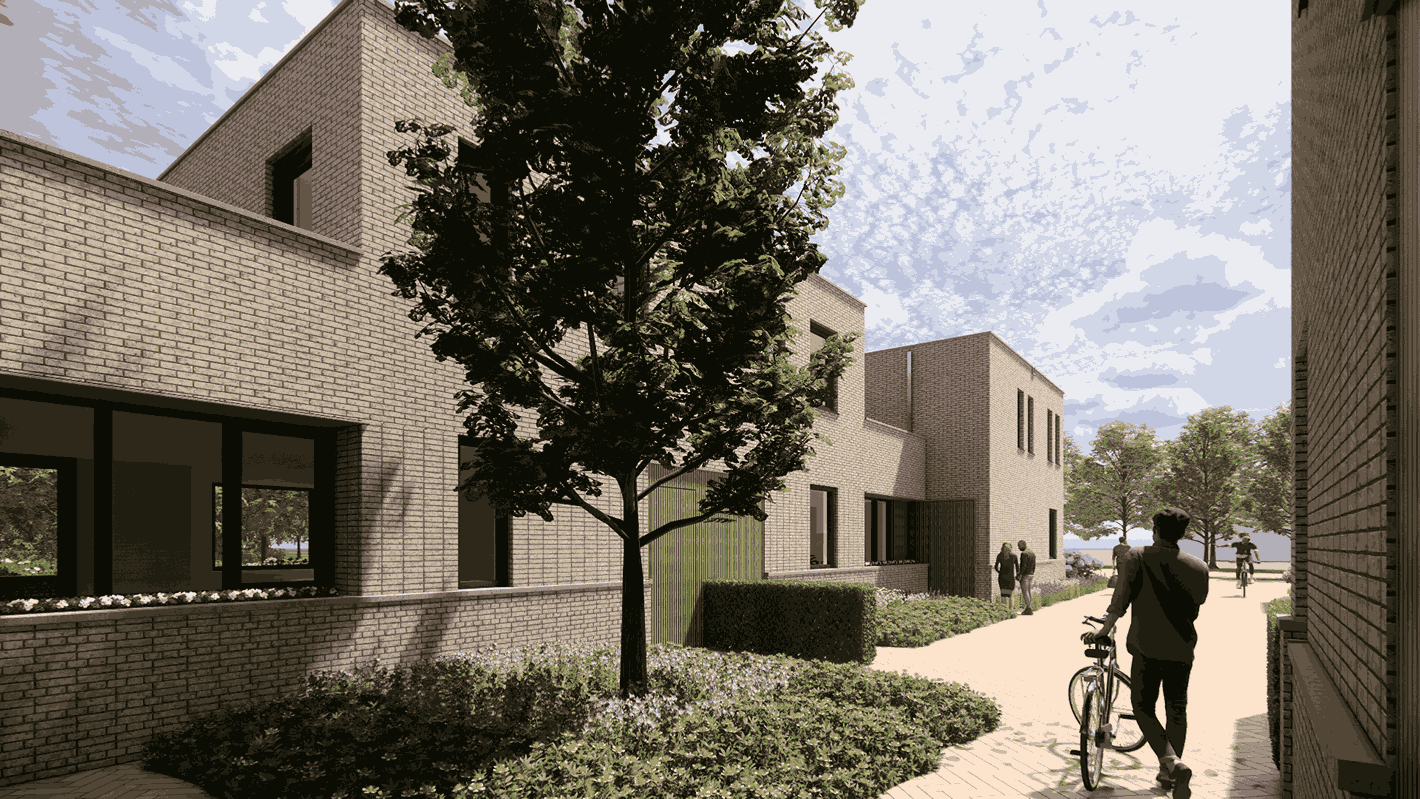Research into Sustainable Urban Development in the Reitdiep Zone: An Innovative Vision for the Future for Groningen
The Reitdiepzone in Groningen is a unique location, surrounded by water, the ring road and a railway line. Urban Climate Architects has research done to how this isolated city edge can transform into a vibrant, sustainable and forward-looking zone. The result is a innovative vision in which space, mobility and nature come together harmoniously.
Innovative Design for a Complex Urban Fabric
Due to its physical boundaries, the Reitdiep zone was isolated from surrounding neighborhoods for a long time. However, this unique situation offers opportunities to create independent functions with a powerful identity. The ring road focuses on buffering noise and speed, while the waterfront gets an open, green and recreational use with cycling routes and places to stay.
Sustainable Area Development in Phases
The existing retail functions in the area lacked structure and coherence. In the new vision, this is solved with a phased, organic development of 14 plots, each with their own identity. This phased approach contributes to sustainable urban growth, where buildings of varying scale and shape complement each other instead of competing.
Sustainability is at the heart of every phase, with attention to:
- Flexible use of functions
- Climate-adaptive landscape design
- Synergy between forms of mobility (bike, car, public transport, water)
- Circular materials and adaptable buildings
A Vision of the Future for 2100
The visualization of the Reitdiepzone in 2100 shows a dynamic and versatile urban area. Buildings are created over time, varying in height and mass, and respond to sight lines from railways, water and major roads. This structure provides a visual rhythm that matches the human experience — for drivers, cyclists, pedestrians and water enthusiasts.
Conclusion: An Area Driven by Research, Innovation and Sustainability
The future of the Reitdiepzone is based on research, facilitated by innovative thinking and realised with a focus on sustainability. The area thus becomes an example of how urban edges can be developed future-proof — flexible, green and in balance with people and the environment.







.jpg)







%20-%20uc%20architects.jpg)
































_11zon.jpg)




.png)




















